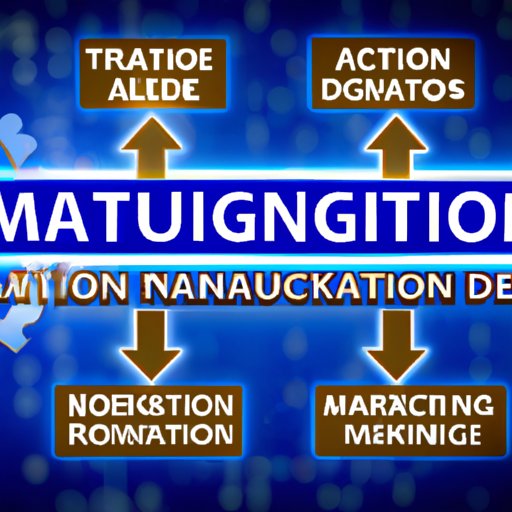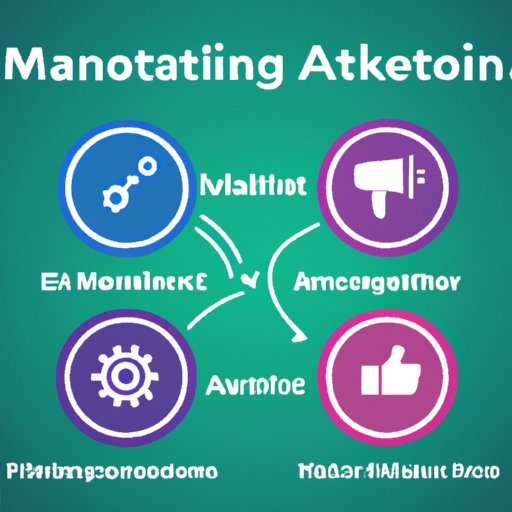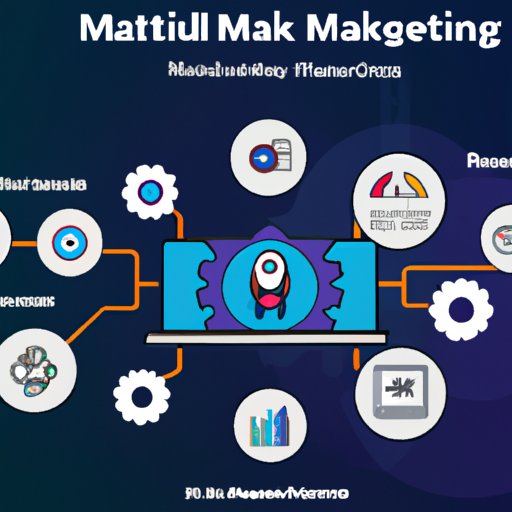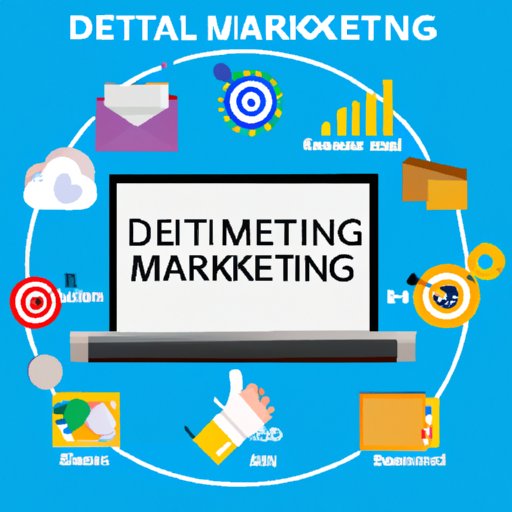Introduction
Digital marketing automation is a powerful tool that can help businesses of all sizes reach their goals more efficiently. With the right strategy in place, automation can streamline processes, improve customer engagement, and drive more conversions. In this guide, we’ll explore what digital marketing automation is, how to get started, the key components of a successful strategy, popular automation tools, and best practices for implementation.

Definition of Digital Marketing Automation
Digital marketing automation is the process of leveraging technology to streamline, optimize, and measure marketing tasks and workflows. It involves using software to automate repetitive tasks, such as sending emails, posting to social media, and analyzing data. The goal of automation is to save time and resources while increasing efficiency and effectiveness.
Overview of Benefits
Digital marketing automation offers numerous benefits to businesses of all sizes. Here are some of the most important advantages:
- Saves time and resources: Automation eliminates the need for manual labor, freeing up valuable time and resources that can be better spent on other tasks.
- Improves customer engagement: Automation allows businesses to send personalized messages to customers at scale, leading to higher engagement rates.
- Increases conversions: Automation helps businesses target high-value customers with relevant messages, resulting in more conversions.
- Increases ROI: Automation helps businesses maximize their return on investment by targeting the right customers with the right message at the right time.
How to Get Started with Digital Marketing Automation
Getting started with digital marketing automation doesn’t have to be difficult. Here are three steps to follow to ensure success:
Identify Goals and Objectives
Before you start implementing automation, it’s important to identify your goals and objectives. What do you want to achieve with automation? Do you want to increase sales? Improve customer engagement? Drive more website traffic? Once you’ve identified your goals, you can start developing a plan to achieve them.
Set Up Tracking and Measurement
In order to effectively track and measure the success of your automation efforts, it’s important to set up tracking and measurement tools. These tools will allow you to monitor the performance of your campaigns and make adjustments accordingly.
Establish a Plan for Implementation
Once you’ve identified your goals and set up tracking and measurement tools, you can start developing a plan for implementation. This plan should include details about which automation tools to use, how to segment audiences, and how to create content. Having a detailed plan in place will ensure that you’re able to implement automation successfully.

The Key Components of a Digital Marketing Automation Strategy
In order to maximize the effectiveness of digital marketing automation, it’s important to understand the key components of a successful strategy. Here are the three most important elements:
Segmentation of Target Audiences
One of the most important components of a digital marketing automation strategy is segmentation of target audiences. Segmentation involves dividing audiences into smaller groups based on demographics, interests, behaviors, and other characteristics. By segmenting audiences, you can tailor messages to each group, improving engagement and increasing conversions.
Creation of Content Library
Another important component of a digital marketing automation strategy is the creation of a content library. This library should include a variety of content types, such as blog posts, videos, infographics, and webinars. Having a variety of content types will ensure that you’re able to engage with customers in multiple ways.
Use of Automation Tools
Finally, it’s important to leverage the right automation tools to ensure success. Popular automation tools include email marketing platforms, social media management tools, and analytics software. Each of these tools can help you automate tasks, measure performance, and optimize campaigns.

An Overview of Popular Digital Marketing Automation Tools
In order to take full advantage of digital marketing automation, it’s important to understand the different types of automation tools available. Here is an overview of some of the most popular tools:
Email Marketing Platforms
Email marketing platforms are one of the most popular automation tools. These platforms allow businesses to easily create, manage, and send emails to customers. They also offer features such as automated responses, segmentation, and A/B testing.
Social Media Management Tools
Social media management tools are another popular automation tool. These tools allow businesses to easily schedule and post content to social media channels. They also offer features such as analytics, monitoring, and engagement tracking.
Analytics Software
Analytics software is essential for tracking and measuring the performance of digital marketing campaigns. These tools allow businesses to easily analyze data in order to make informed decisions about their marketing strategies.
Best Practices for Implementing Digital Marketing Automation
Implementing digital marketing automation can be challenging. To ensure success, it’s important to follow best practices. Here are some tips to keep in mind:
Test and Adjust Automation Settings
When setting up automation, it’s important to test and adjust settings regularly. Testing and adjusting settings will help ensure that your campaigns are running smoothly and delivering the desired results.
Monitor Performance Regularly
It’s also important to monitor the performance of your automation campaigns on a regular basis. Monitoring performance will allow you to quickly identify any issues and make adjustments accordingly.
Utilize Personalization Tactics
Finally, it’s important to utilize personalization tactics when creating campaigns. Personalization can help improve customer engagement and increase conversions.
Conclusion
Digital marketing automation is a powerful tool for businesses of all sizes. When implemented correctly, automation can save time and resources, improve customer engagement, and increase conversions. In this guide, we explored what digital marketing automation is, how to get started, the key components of a successful strategy, popular automation tools, and best practices for implementation. By following these guidelines, businesses can ensure success when implementing digital marketing automation.
Summary of Benefits
Digital marketing automation offers numerous benefits to businesses of all sizes, including saving time and resources, improving customer engagement, increasing conversions, and maximizing ROI.
Final Thoughts on Implementing Digital Marketing Automation
Implementing digital marketing automation can be challenging, but with the right strategy in place, businesses can take full advantage of this powerful tool. By understanding the key components of a successful strategy, leveraging the right automation tools, and following best practices, businesses can ensure success when implementing digital marketing automation.
(Note: Is this article not meeting your expectations? Do you have knowledge or insights to share? Unlock new opportunities and expand your reach by joining our authors team. Click Registration to join us and share your expertise with our readers.)
